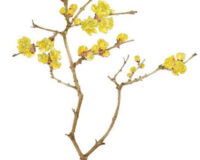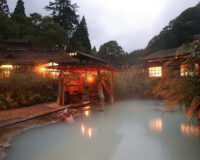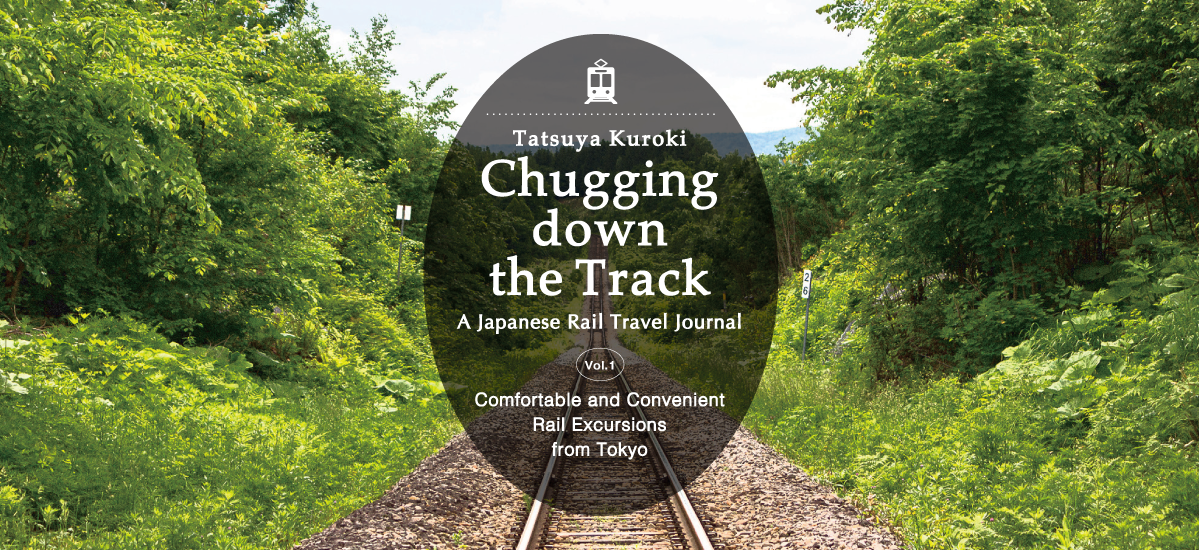
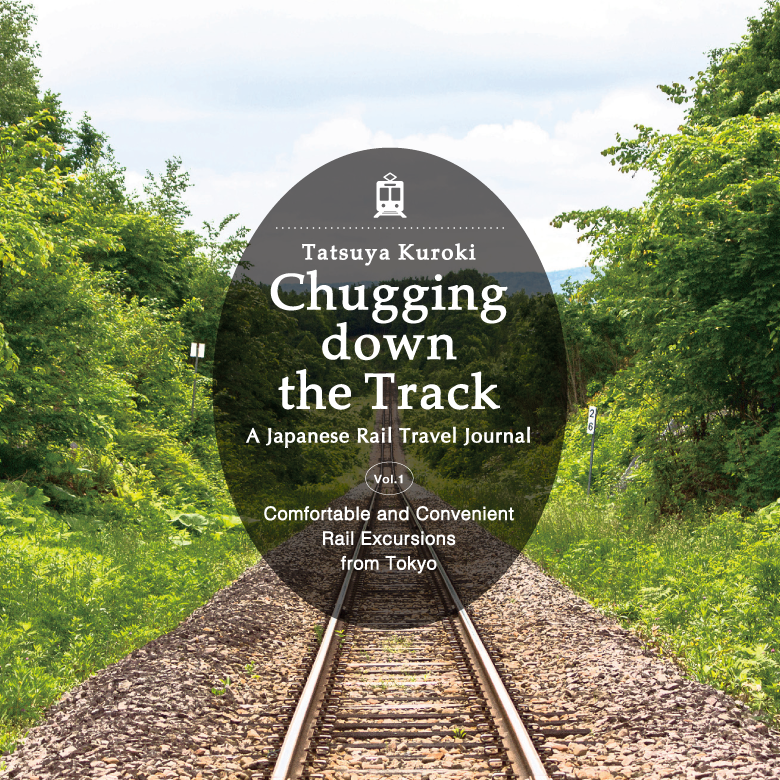
With one of the world’s most developed rail networks, Japan is criss-crossed with fascinating train routes. Railway journeys allow travellers to experience the true flavour of each region in ways no other form of transport can offer. In this series, Tatsuya Kuroki shares his train travel tips and experiences with us.
We begin with some of Tokyo’s popular and accessible excursion trains.
Text and Photos : 黒木達也 Tatsuya Kuroki / English Version : Judy Evans
Keyword : Rail Travel Journal Series / Mount Fuji / Train Travel / Day Trips / Excursion Trains / Izu Peninsula / Nikko
Direct from City to Top Tourist Spots – Tokyo’s Handy Excursion Trains
What better way to get out and about and see Japan’s beautiful countryside than by train? Japan’s railway companies have laid on increasing numbers of special excursion express trains, heeding the wishes of the travelling public to be able to get straight from the Tokyo area to their favourite resorts and sightseeing spots by rail. These initiatives have been welcomed by domestic and international travellers alike.
1. From Shinjuku to Gotemba – the Gateway to Mt Fuji
An iconic symbol of Japan, Mt Fuji is possibly the country’s most recognizable sight-seeing spot. Several railway companies operate excursion trains to the area, with perhaps the best-known of these being the “Odakyū Romance Car”, a limited express train linking Shinjuku with Gotemba, a town in the foothills of Mt Fuji. The train leaves Shinjuku via the Odakyū Line, then switches to the JR Gotemba line at Matsuda Station in Kanagawa Prefecture.
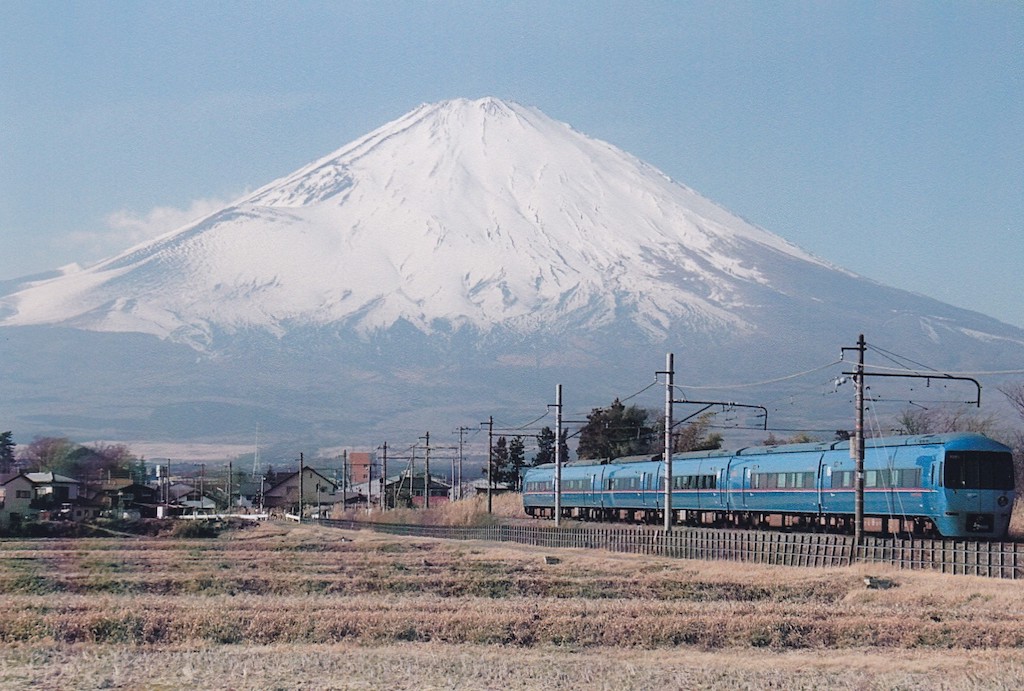
The Romance Car originally started out with the name “Asagiri” (morning fog), travelling as far as Numazu, a hot spring resort at the northern end of the Izu Peninsula. Nowadays however, with the service being extended as far as Gotemba, the Romance Car delivers passengers not only to Mt Fuji’s front door, but also allows easy access to the picturesque resort areas of Hakone and the Fuji Five Lakes. (As well as another attraction in Gotemba, particularly popular with overseas visitors – the Gotemba Premium Outlets mall!)
An alternate service, the “Metro-Hakone” Romance Car Express delivers passengers directly from central Tokyo subway stations to Hakone-Yumoto Station, the gateway to the scenic Hakone hot spring resort area. This is a popular destination for tourists from all over the world, famous not only for its hot springs but also for the beautiful Lake Ashinoko and the steaming Ōwakudani volcanic valley. The “Metro-Hakone” service is operated by the Odakyū Electric Railway Company in conjunction with the Tokyo Metro subway company. Trains set out from Kita-Senju Station on the Chiyōda Line, before switching to the Odakyū Line at Yoyogi-Uehara. This popular excursion train conveniently stops to pick up passengers from central Tokyo subway stations such as Otemachi, Kasumigaseki and Omotesandō.
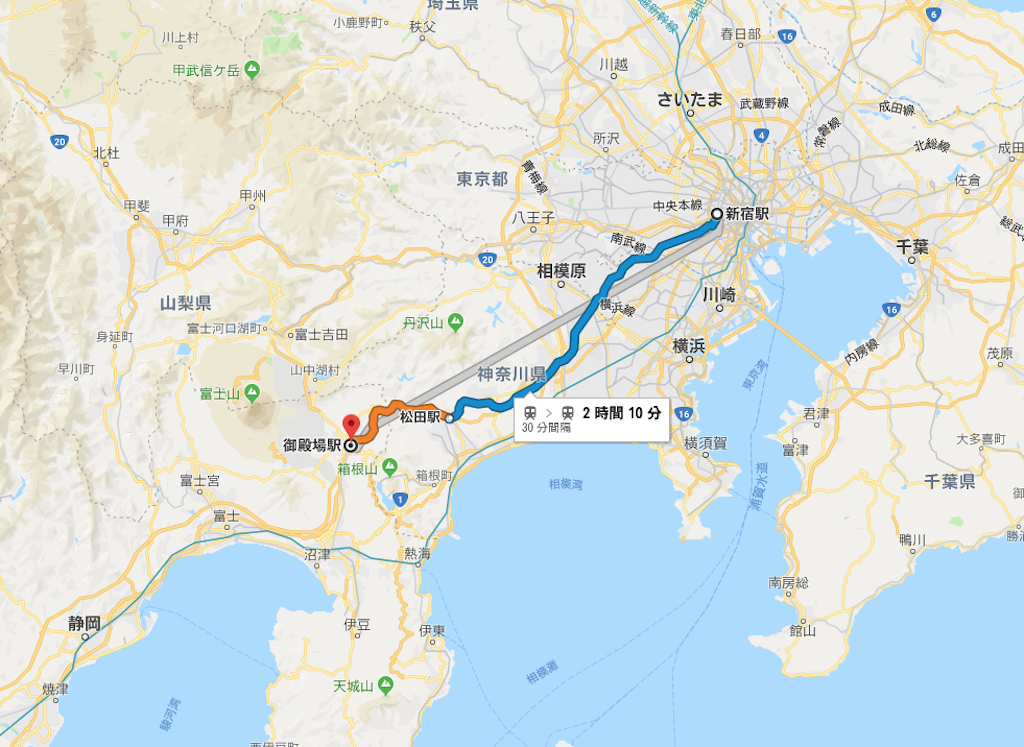
2. Mt Fuji via Scenic Yamanashi Prefecture.
Another train route to Mt Fuji runs through scenic Yamanashi Prefecture on the northern side of the mountain. Trains go from Shinjuku in Tokyo via the JR Chūō Line as far as Ōtsuki in Yamanashi Prefecture, before switching to the Fuji Kyūkō line and continuing on to Kawaguchiko Station in the northern foothills of the mountain. Most of the trains are rapid service trains and do not require an extra express train fee. The services are mainly aimed at day trippers and hikers, with extra services at the weekends. From March 16, 2019, the Fuji Kaiyū Express service will provide direct access to Kawaguchiko Station, with two trains per day on weekdays and three on the weekends. The ride as far as Mt Fuji Station will take two hours, with just a few minutes extra to continue through to Fuji-Q Highland or the final stop, Kawaguchiko.
The Narita Express is a popular way for overseas visitors to get to Kawaguchiko directly from Narita Airport. The service currently operates once a day, passing through Shinjuku and Ōtsuki Stations. The timetable will change from March 10, 2019, so it is advisable to check. All seats are reserved. For visitors arriving at Haneda Airport, the Airport Express conveniently provides a direct link between Haneda and Narita airports.

An iconic shot of Mt Fuji can be captured from the Fuji-kyū Line. Take a train that stops at Shimo-Yoshida Station and walk from there up to Arakura Sengen Shrine, about ten minutes on foot. The pagoda there resembles the one at Kiyomizu Shrine in Kyoto, hence the saying that you can “capture Kyoto and Mt Fuji in the same shot”.
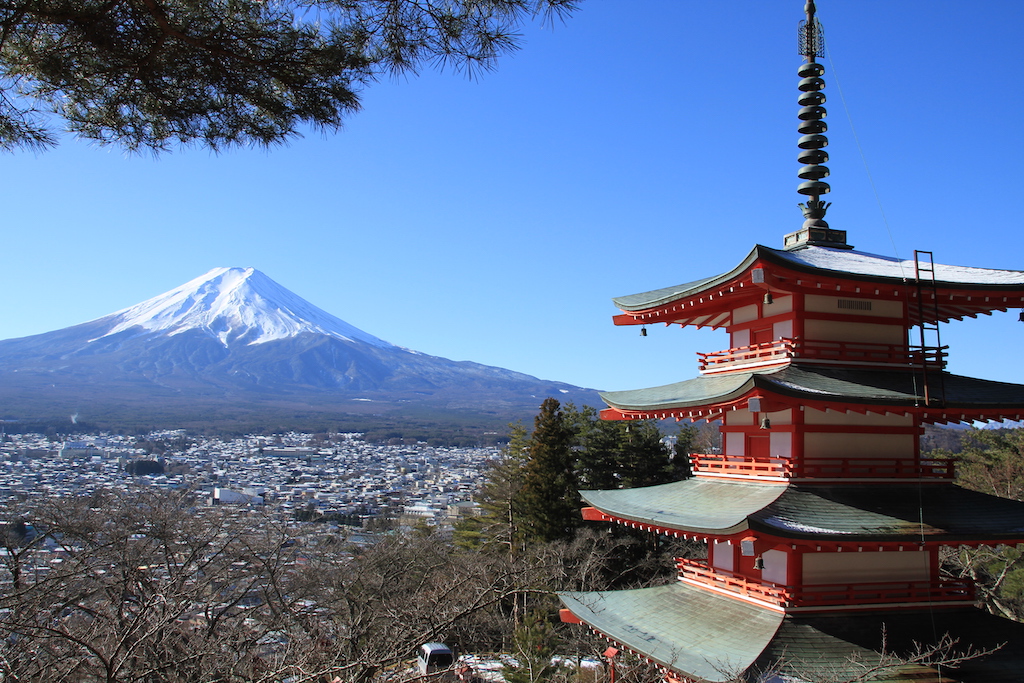

3. Historical Express to Izu Peninsula
The scenic Izu Peninsula, with its many hot spring resorts, beautiful coastline, mountains and forests, is easily accessed from Tokyo. Excursion trains from the city use the Tōkaidō Line from Tokyo before switching to the Izu Hakone and Izu Kyūkō railways. Beginning in the early postwar years, two popular services were the “Ideyu” and the “Ikoi” trains, bringing holiday makers directly from Tokyo to the hot spring resorts of Izu. The Izu Kyūkō line had not yet opened at that time, so trains only went as far as the town of Itō on the east coast of the peninsula. Many of the hot spring resorts of the peninsula are located in quiet little towns and remain popular with seniors today. Passengers coming by Shinkansen need to transfer to the Izu Hakone or Izu Kyūkō railways at Atami.
The original excursion trains to the peninsula left from Tokyo Station, but services leaving from Shinjuku and Ikebukuro have recently been added, making the route even more accessible. The “Odoriko” and “Super Odoriko” services are particularly tailored to the needs of sightseers, with extra trains running at the weekends. The deluxe Super Odoriko trains have raised floors to bring the seats higher and large windows that allow passengers to really take in the magnificent scenery along the route.
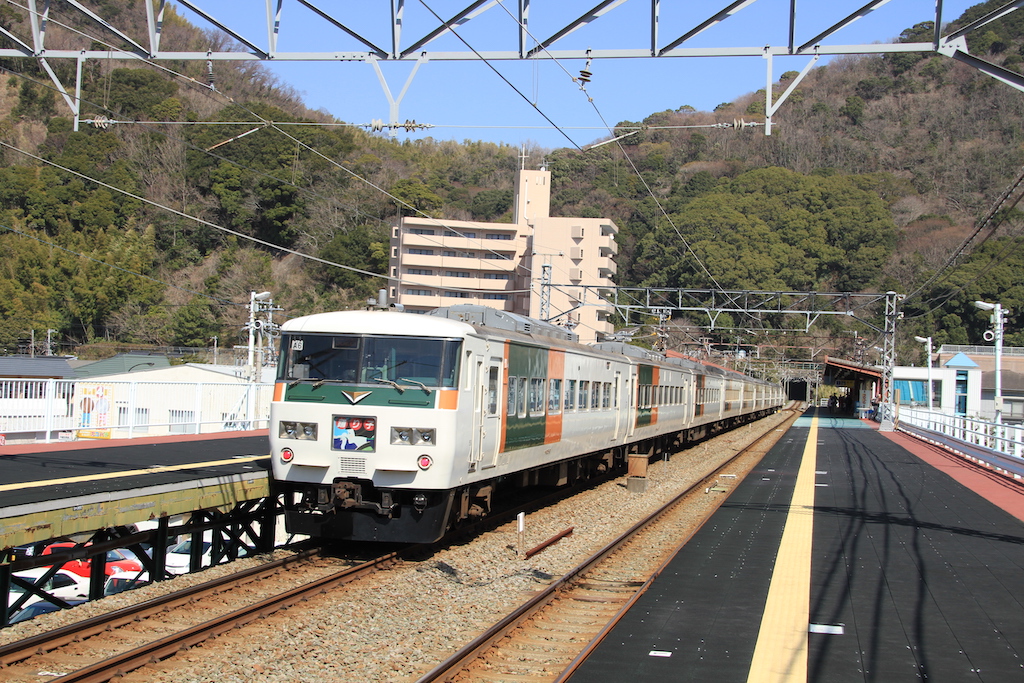
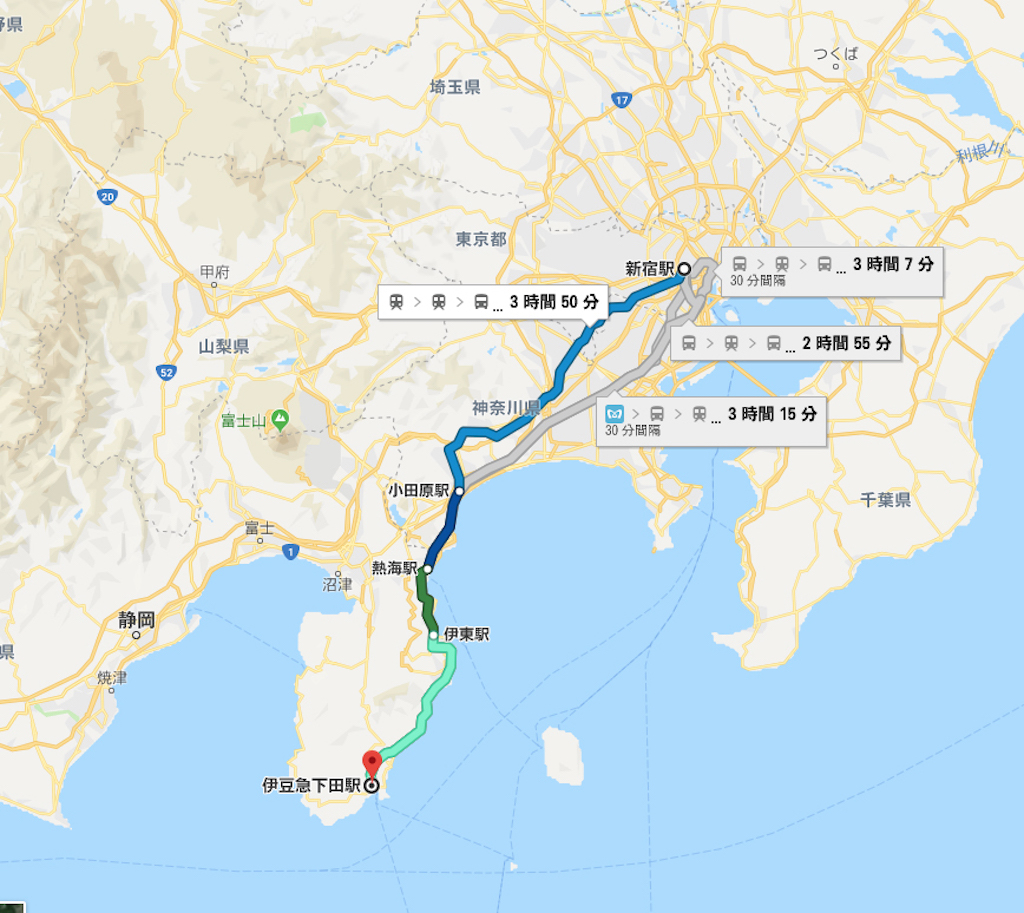
4. Rivals Join Forces to Run Services to Nikkō
World Heritage site Nikkō is another of Japan’s best-known tourist attractions. More and more sightseers flock to the area each year to visit famous sites such as the historical Tōshōgū Shrine, spectacular Kegon Falls and the nearby wetlands of Senjōgahara. Trains from Tokyo arrive either at Tōbu Nikkō Station or JR Nikkō Station, which are only 100 metres apart. The Tōbu Railway operates the luxurious Express 100 series trains, dubbed the “Limited Express Spacia”, linking Tokyo with Nikkō and the hot spring resort of Kinugawa Onsen. Although Japan Rail did at one time operate the “Nikkō”, an excursion train running directly from Ueno to Nikkō via Utsunomiya, the service was discontinued after the opening of the Tōhoku Shinkansen in 1982.
Because Japan Rail passengers now have to transfer from the Shinkansen at Utsunomiya Station in Saitama Prefecture and double back on the JR Nikkō Line, the majority of travellers prefer the convenience of the direct Tōbu Railway Company services such as the Spacia, which has long dominated the Tokyo-Nikkō route. Another factor in the popularity of the Tōbu Railway Co. service is that the company has trains heading to both Nikkō and the hot spring resort of Kinugawa Onsen. The line branches just before Nikkō at Shimo-Imaichi Station, with one branch heading to Kinugawa Onsen and the other leading to World Heritage Nikkō. Tōbu runs Spacia trains to both destinations, a level of convenience that Japan Rail simply cannot compete with.
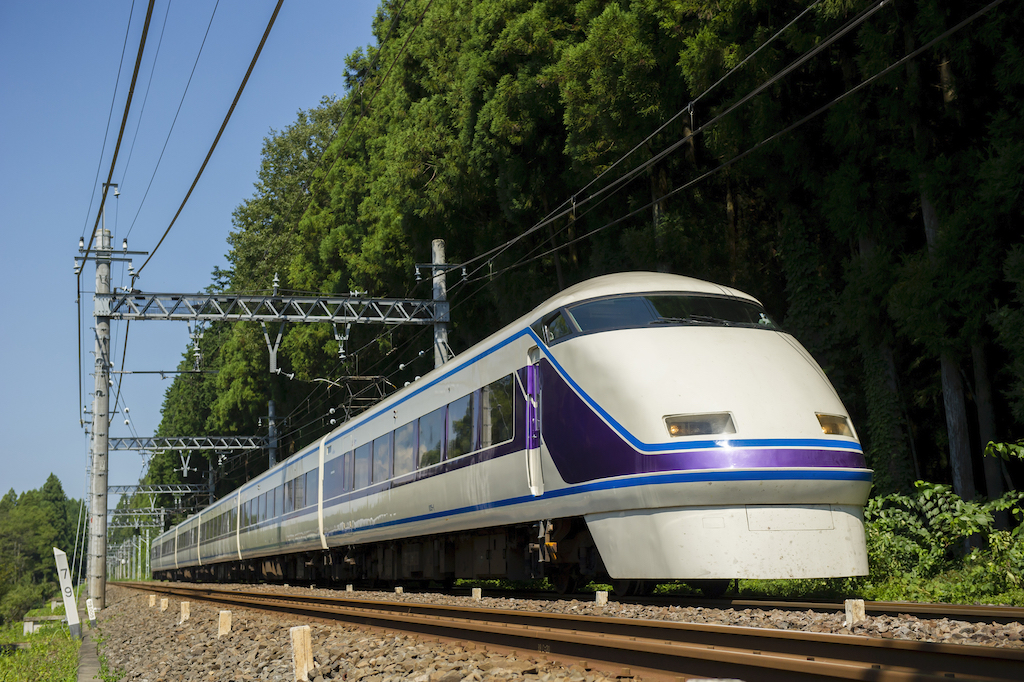
However popular the Tōbu Railway Company excursion trains to Nikkō might be though, having to leave from Asakusa or Kita-Senjū stations is not particularly convenient for passengers from the western parts of Tokyo or from the Yokohama and Kawasaki areas. Tōbu found a solution by joining forces with rival Japan Rail to operate services on JR lines out of Shinjuku Station, stopping to pick up passengers in Ikebukuro and Ōmiya stations before heading to Nikkō and Kinugawa. The service operates over the JR Shōnan-Shinjuku route and Utsunomiya Line, switching tracks to the Tōbu Nikkō Line at Kurihashi Station in Saitama Prefecture. This is where the trains’ crews change as well – it’s the passengers that get to remain on board! (The Japan Rail Pass is only valid as far as Kurihashi Station.)




